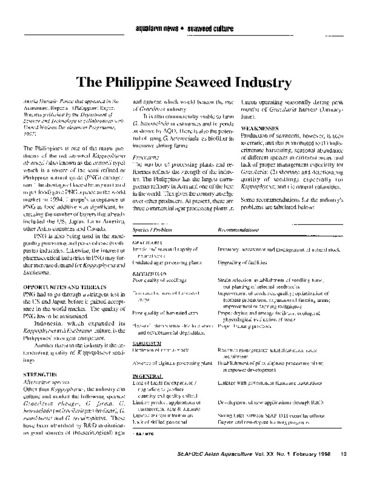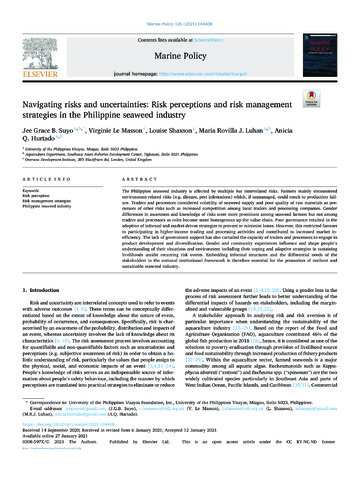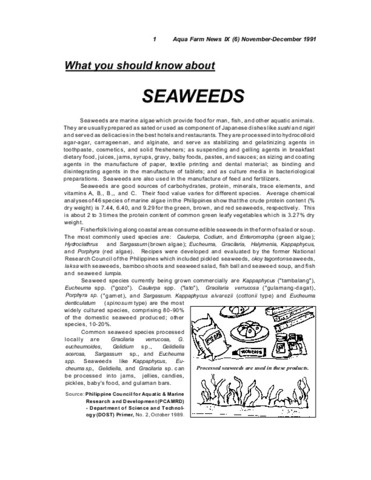The Philippine seaweed industry
- Global styles
- MLA
- Vancouver
- Elsevier - Harvard
- APA
- Help
Share
Abstract
A brief outline is given of the Philippine seaweed industry, which involves mainly the red seaweed Kappaphycus alvarezii, produced as a source of the semi-refined or Philippine natural grade (PNG) carrageenan. Other species cultured and marketed include: Gracilaria changii, G.firma, G.heteroclada, G.manilaensis and G.tenuistipitata. The Philippines has the largest carrageenan refinery in Asia. However, production of seaweeds is rather eratic, which is attributed to the following factors: 1) indiscriminate harvesting, seasonal abundance of different species in different areas and lack of proper management; 2) shortage and deteriorating quality of seedlings, especially for Kappaphycus; and 3) natural calamaties.
Description
Already published in the Assessment Reports - (Philippine) Export Winners, published by the Department of Science and Technology in collaboration with United Nations Development Programme, 1997.
Suggested Citation
Hurtado-Ponce, A. (1998). The Philippine seaweed industry. SEAFDEC Asian Aquaculture , 20(1), 13. http://hdl.handle.net/10862/1788
Type
magazineArticleISSN
0115-4974Koleksi
Related items
Showing items related by title, author, creator and subject.
-
Navigating risks and uncertainties: Risk perceptions and risk management strategies in the Philippine seaweed industry
Suyo, Jee Grace; Le Masson, Virginie; Shaxson, Louise; Luhan, Maria Rovilla; Hurtado, Anicia Q. (Elsevier, 2021-04)The Philippine seaweed industry is affected by multiple but interrelated risks. Farmers mainly encountered environment-related risks (e.g. disease, pest infestations) which, if unmanaged, could result to production failure. ... -
Status of seaweed farming in Region 9
Kalbi, Halpi H. (Aquaculture Department, Southeast Asian Fisheries Development Center, 2002) -
What you should know about seaweeds
Carreon-Lagoc, Julia; Southeast Asian Fisheries Development Center, Aquaculture Department (Aquaculture Department, Southeast Asian Fisheries Development Center, 1991)






